issue contents
June 2010 issue

Cover illustration: 1.4 Å resolution structure of Paracoccus pantotrophus pseudoazurin (Najmudin et al., p. 627).
structural communications
The crystal structure of the photosynthetic A4 isoform of glyceraldehyde-3-phosphate dehydrogenase from the model plant A. thaliana has been solved at 2.6 Å resolution. The tetrameric structure includes four molecules of NAD and eight sulfate ions occupying the P sites involved in catalysis.
PDB reference: glyceraldehyde-3-phosphate dehydrogenase, 3k2b
A high-resolution structure of P. pantrotrophus pseudoazurin is reported at 1.4 Å resolution, together with secondary-structure-based sequence alignment of the type 1 copper protein family.
PDB reference: pseudoazurin, 3erx
The crystal structure of FeoA from Stenotrophomonas maltophilia has been determined to a resolution of 1.7 Å using an Se single-wavelength anomalous dispersion (Se-SAD) approach and revealed a unique dimer cross-linked by two zinc ions and six chloride ions.
PDB reference: FeoA, 3mhx
The crystal structure of the phosphatase domain of Sts-1 at pH 4.6 complexed with sulfate has been determined to 1.35 Å resolution.
PDB reference: phosphatase domain of Sts-1, 3mbk
The crystal structure of PhaZ7 depolymerase determined at atomic (1.2 Å) resolution in the presence of PMSF reveals a preformed serine protease catalytic triad and details of the architecture of the active site.
crystallization communications
The expression, purification and crystallization of a thermostable short-chain alcohol dehydrogenase from the archaeon T. sibiricus is reported.
Soluble N-terminal domain of yeast magnesium ion transporter Mrs2 was overexpressed in E. coli, purified, crystallized and X-ray diffraction data collected to 1.83 Å resolution.
A DNA-binding protein from S. virginiae was crystallized using the hanging-drop vapour-diffusion method. The crystals diffracted to approximately 3.0 Å resolution.
Deuterated type III antifreeze protein specifically hydrogen reverse-labelled in the methyl groups of leucine and valine residues has been expressed, purified and crystallized. Preliminary neutron data collection showed diffraction to 1.80 Å resolution from a 0.23 mm3 crystal.
The catalytic module of endolysin from the phage Cp-7 was crystallized using the vapour-diffusion method. Native data were collected to 2.4 Å resolution.
The C-terminal domain of mouse hepatitis virus nucleocapsid protein has been overexpressed in E. coli, purified and crystallized. The crystal belonged to space group P422, with unit-cell parameters a = 66.6, c = 50.8 Å, and diffracted to 2.20 Å resolution.
L-Rhamnose isomerase (L-RhI) from B. halodurans has been purified and crystallized. The crystals of L-RhI belonged to the monoclinic space group P21, with unit-cell parameters a = 83.2, b = 164.9, c = 92.0 Å, β = 116.0°, and diffracted to 2.5 Å resolution.
Different forms of the magnesium-ion transporter CorC have been crystallized; crystallization was affected by nucleotides and magnesium ions.
The transporters of the bacterial phosphotransferase system mediate the uptake of carbohydrates with concomitant phosphorylation. Good-quality crystals have been obtained of the membrane-spanning EIICGlc domain of the E. coli glucose transporter.
Three mutant forms of Ebola VP35 interferon inhibitory domain were crystallized in three different space groups.
The glycosylated fungal haem-thiolate peroxygenase AaPII was crystallized in three different forms from a charge-heterogeneous protein sample. Structure solution of the 45 kDa protein was achieved with SAD utilizing the haem iron and the structure was determined at 2.2 Å resolution.
PrTX-I, a noncatalytic and myotoxic Lys49-phospholipase A2 from B. pirajai venom, was cocrystallized with the inhibitor rosmarinic acid from C. verbenacea. The crystals diffracted X-rays to 1.8 Å resolution and the structure was solved, indicating a remarkable electronic density for the ligand at the entrance to the hydrophobic channel.
Crystallization of glycosylated human prolylcarboxypeptidase expressed in Chinese hamster ovary cells is described. The hexagonal crystals belong to space group R32 and diffract to 2.8 Å resolution.
The gene segment encoding avian infectious bronchitis virus nonstructural protein 9 has been cloned and expressed in Escherichia coli. The protein has been crystallized and the crystals diffracted X-rays to 2.44 Å resolution.
Ethanolamine ammonia-lyase from E. coli has been overexpressed, purified and crystallized. The crystals diffracted to 2.2 Å resolution using synchrotron radiation.
The ferredoxin reductase component of carbazole 1,9a-dioxygenase (Red) is involved in electron transfer from NAD(P)H to ferredoxin. The class IIA Red from Novosphingobium sp. KA1 was crystallized and the crystal diffracted to a resolution of 1.58 Å.
Thermostable recombinant L2 lipase from thermophilic Bacillus sp. L2 has been crystallized by using counter-diffusion method and diffracted to 2.7 Å resolution. The crystal belongs to the primitive orthorhombic space group P212121 with unit-cell parameters a = 87.44, b = 94.90, c = 126.46 Å.
SeMet-substituted pyridoxal 4-dehydrogenase from M. loti MAFF303099 was crystallized and diffraction data were collected to 2.9 Å resolution.
The crystallization of the Cry4Ba toxin from B. thuringiensis is described.
GIMAP2, a guanine nucleotide-binding protein belonging to the GIMAP family, has been crystallized in various nucleotide-loaded states.
Crystals of the complex between the Fab fragment of a human anti-EphA2 antibody and the N-terminal domain of human EphA2 have been obtained. Diffraction data were collected to 2.55 Å resolution.
Crystals of the R2 subunit from the oncovirus Kaposi's sarcoma-associated γ-herpesvirus (KSHV) were obtained by the use of in situ proteolysis. The crystals diffracted to 2.0 Å resolution and belonged to space group P21.
The enzyme 3-isopropylmalate dehydrogenase (IPMDH) from T. thermophilus, which catalyses the penultimate reaction step of the leucine-biosynthesis pathway, has been crystallized in various states along its reaction coordinate.
laboratory communications
New types of aggregation suppressors, such as amino acids and their derivatives, were focused on as fourth-component additives. Data were obtained that indicated that the additives promote protein crystallization.
During the past two decades, amino acids and amino-acid derivatives have been applied in various fields of protein chemistry. The potential use of amino acids and their derivatives as new precipitating agents is described.


 journal menu
journal menu











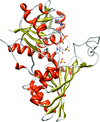


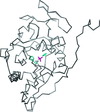
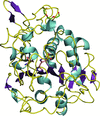
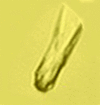








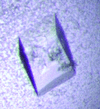


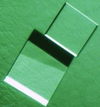











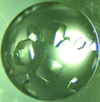
![[publBio]](/logos/publbio.gif)





